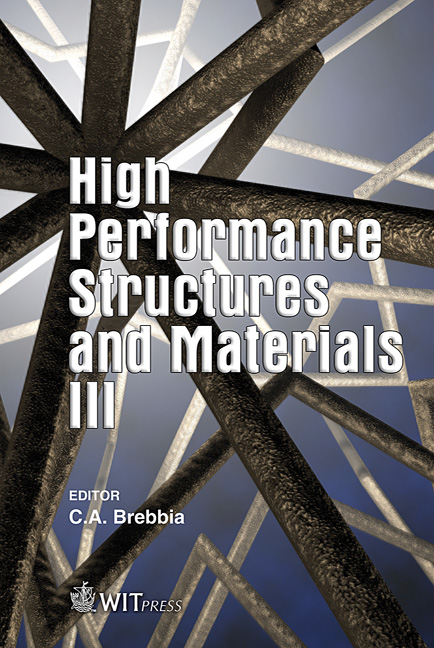An Orthotropic Damage Model For Crash Simulation Of Composites
Price
Free (open access)
Transaction
Volume
85
Pages
9
Published
2006
Size
920 kb
Paper DOI
10.2495/HPSM060501
Copyright
WIT Press
Author(s)
W. Wang, F. H. M. Swartjes & M. D. Gan
Abstract
In this paper, a practical orthotropic damage model is developed and tested for composite materials during crash. The model uses the Hashin’s failure criteria in which the fibre and matrix failures are described explicitly, both in tension and compression. A linear softening degradation is proposed and a close-form solution of the corresponding damage parameter is provided. To reduce the mesh dependency, an embedded discontinuous element is proposed. It is a virtual embedded element in the sense that an actual element is divided into two zones, one elastic (undamaged) zone and one localization (damaged) zone. Their equivalence is preserved by constraining the kinematics and equilibrium equations. Since the damage zone is introduced into the element, the corresponding dissipated energy due to damage is fixed, independent of the element size. The numerical simulations using the developed damage model show a mesh objective result and correlate well with the energy dissipation in dynamic 3-point bending experiments. It is concluded that an accurate material calibration is crucial for the success of failure simulations. The traditional strain mapping cannot be applied to failure problems in which the strain distribution is highly non-uniform. Material parameter calibration should take into account the ratio of the failure zone and the gauge length. A practical approximation formula is provided. Keywords: composite, damage model, crash simulation, embedded element. 1 Introduction The crash simulation of composites is particularly difficult due to the complexity of its physics. First, the failure process involves multiscales and is difficult to
Keywords
composite, damage model, crash simulation, embedded element.





